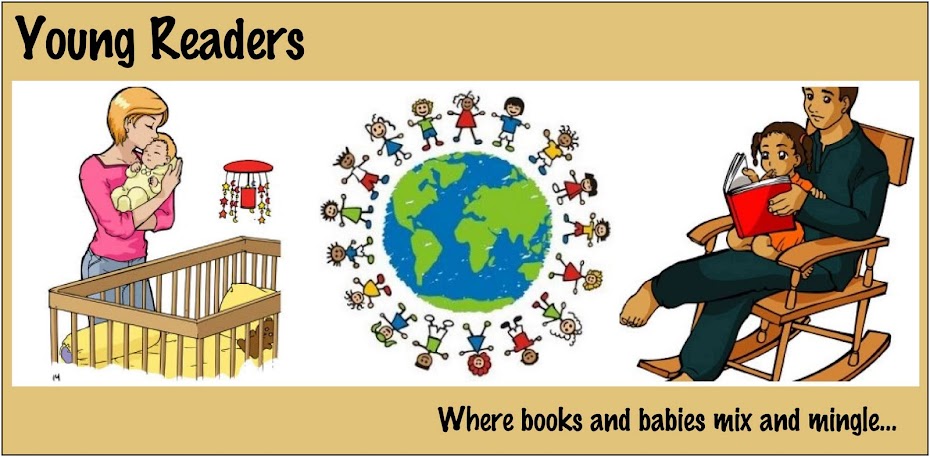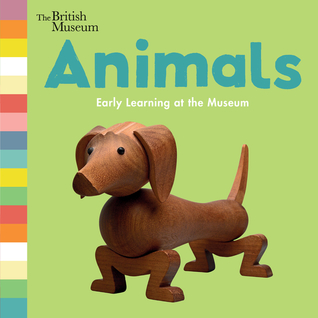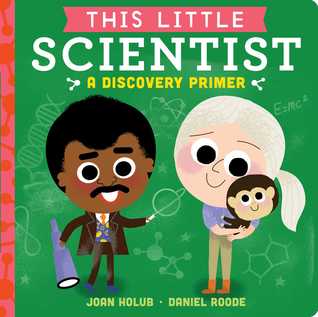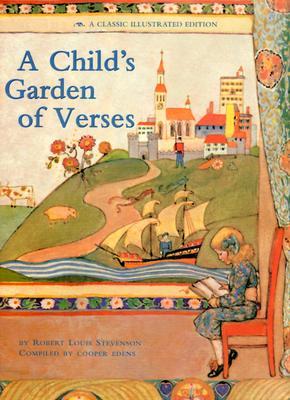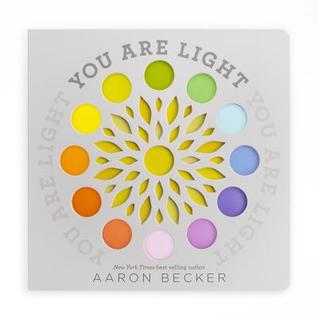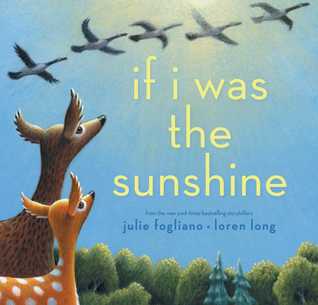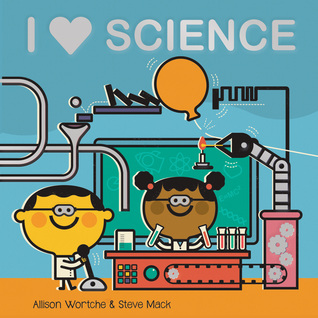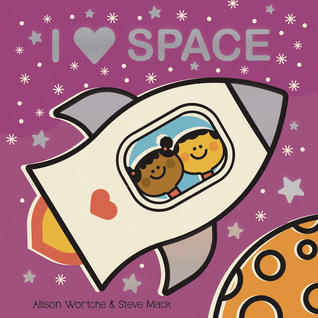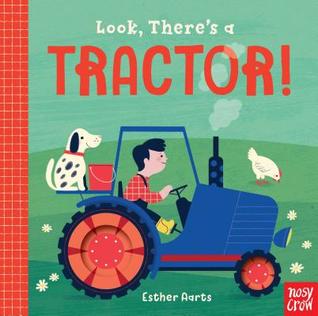Mama Tiger, Tiger Cub. Steve Light. 2019. Candlewick Press. 16 pages. [Source: Review Copy]
First sentence: Mama Tiger/ Bright Sky/ Mama Tiger/ Zigzag River/ Mama Tiger/ Slippery Fish/
Premise/plot: Does this one have a plot? If it does--and I'm not saying it doesn't--it's up to readers to piece the dots together. Or to phrase it a different way, it is up to readers to supply THE VERBS. The book follows MAMA TIGER. Tiger Cub makes an appearance by the end of the book.
My thoughts: I like simple. I can do simple. Word books for little ones do not require verbs or a story. Alphabet books do not require verbs or a story. Counting books do not require verbs or a story. This one, however, I felt could have benefited from a little more complexity.
Perhaps this one is best for tiger enthusiasts with big imaginations.
© 2019 Becky Laney of Young Readers
Monday, April 29, 2019
Friday, April 26, 2019
The Book Hog
The Book Hog. Greg Pizzoli. 2019. Disney-Hyperion. 48 pages. [Source: Library]
First sentence: The Book Hog loved books. And he had quite a few. He loved the way they smelled, and the way the pages felt in his hooves. He especially liked the ones with pictures.
Premise/plot: The Book Hog loves, loves, loves books. That means he loves to read, right? Maybe. Maybe not. Could the Book Hog have a secret?! If he does--and he does--this one may just have an oh-so-satisfying ending.
My thoughts: I loved this one. The Book Hog has a secret: though he loves books and stories he doesn't know how to read. But with a little help and some time he may just learn how to read. He may love books even more than before....
Text: 5 out of 5
Illustrations: 4 out of 5
Total: 9 out of 10
© 2019 Becky Laney of Young Readers
First sentence: The Book Hog loved books. And he had quite a few. He loved the way they smelled, and the way the pages felt in his hooves. He especially liked the ones with pictures.
Premise/plot: The Book Hog loves, loves, loves books. That means he loves to read, right? Maybe. Maybe not. Could the Book Hog have a secret?! If he does--and he does--this one may just have an oh-so-satisfying ending.
My thoughts: I loved this one. The Book Hog has a secret: though he loves books and stories he doesn't know how to read. But with a little help and some time he may just learn how to read. He may love books even more than before....
Text: 5 out of 5
Illustrations: 4 out of 5
Total: 9 out of 10
© 2019 Becky Laney of Young Readers
Thursday, April 25, 2019
The Book in the Book in the Book
The Book in the Book in the Book. Julien Baer. Illustrated by Simon Bailly. 2019. Holiday House. 56 pages. [Source: Library]
First sentence: What a beautiful day! The air is so clear. The sky so blue. Thomas is on vacation with his parents. Hooray!
Premise/plot: Thomas is on vacation with his parents. He gets bored. He loses his parents. He finds a book. The name of the book is The Book in the Book in the Book. He reads the book which stars him and his family on vacation. He gets bored. He loses his parents. He finds a book. The name of the book is The Book in the Book in the Book. He reads the book which stars him and his family on vacation. He gets bored. He loses his parents. He finds a book. The name of the book is The Book in the Book in the Book. He reads the book which stars him and his family on vacation. He gets bored. He loses his parents. He gets woken up by his parents--in each book.
My thoughts: This is a premise-driven picture book that is Inception-like. It is odd and strange and a bit boring. Since all the focus is on the premise--to see how many layers this one can get before he wakes up from his dream--there is no characterization. I don't care about Thomas or his family. I just want the book to be over.
Text: 2 out of 5
Illustrations: 2 out of 5
Total: 4 out of 10
© 2019 Becky Laney of Young Readers
First sentence: What a beautiful day! The air is so clear. The sky so blue. Thomas is on vacation with his parents. Hooray!
Premise/plot: Thomas is on vacation with his parents. He gets bored. He loses his parents. He finds a book. The name of the book is The Book in the Book in the Book. He reads the book which stars him and his family on vacation. He gets bored. He loses his parents. He finds a book. The name of the book is The Book in the Book in the Book. He reads the book which stars him and his family on vacation. He gets bored. He loses his parents. He finds a book. The name of the book is The Book in the Book in the Book. He reads the book which stars him and his family on vacation. He gets bored. He loses his parents. He gets woken up by his parents--in each book.
My thoughts: This is a premise-driven picture book that is Inception-like. It is odd and strange and a bit boring. Since all the focus is on the premise--to see how many layers this one can get before he wakes up from his dream--there is no characterization. I don't care about Thomas or his family. I just want the book to be over.
Text: 2 out of 5
Illustrations: 2 out of 5
Total: 4 out of 10
© 2019 Becky Laney of Young Readers
Wednesday, April 24, 2019
The Unbudgeable Curmudgeon
The Unbudgeable Curmudgeon. Matthew Burgess. Illustrated by Fiona Woodcock. 2019. Random House. 32 pages. [Source: Library]
First sentence: How do you budge an unbudgeable curmudgeon who really refuses to budge? You might ask the curmudgeon if he wouldn't mind scooching over a smidgen. Or you could distract the curmudgeon by changing the subject...
Premise/plot: What is a curmudgeon? The end papers provide the definition: "A bad-tempered, difficult, cranky person; a grouch." There are TWO curmudgeons in this one. The first is the brother; the second the sister. Apparently in trying to BUDGE a curmudgeon, she became one herself. (I'm not surprised!)
My thoughts: I enjoyed this one. I really like the narration. It's just fun to read aloud. I think this story is easy to relate to--no matter how old or young you are.
Text: 5 out of 5
Illustrations: 3 out of 5
Total: 8 out of 10
© 2019 Becky Laney of Young Readers
First sentence: How do you budge an unbudgeable curmudgeon who really refuses to budge? You might ask the curmudgeon if he wouldn't mind scooching over a smidgen. Or you could distract the curmudgeon by changing the subject...
Premise/plot: What is a curmudgeon? The end papers provide the definition: "A bad-tempered, difficult, cranky person; a grouch." There are TWO curmudgeons in this one. The first is the brother; the second the sister. Apparently in trying to BUDGE a curmudgeon, she became one herself. (I'm not surprised!)
My thoughts: I enjoyed this one. I really like the narration. It's just fun to read aloud. I think this story is easy to relate to--no matter how old or young you are.
Text: 5 out of 5
Illustrations: 3 out of 5
Total: 8 out of 10
© 2019 Becky Laney of Young Readers
Monday, April 22, 2019
Board book: Animals
Animals: Early Learning at the Museum. British Museum. 2019. Candlewick Press. 22 pages. [Source: Review copy]
First sentence: camels, beetle, fish, cats, parrots, lion, ducks,
Premise/plot: Board books about animals abound. This one is unique, in my opinion, because of the illustrations. The illustrations are photographs of objects from The British Museum. The text is super-simple--just animal names. Each spread introduces an animal or two or three. The index at the back of the book gives more information for parents about the objects photographed. The dog--featured on the cover--is a toy dog from Denmark, circa 1934.
My thoughts: I enjoyed this one. I loved reading the index and finding out more. One of the oldest objects comes from Egypt--it's a green glazed Hippopotamus--circa 1800 BCE. I found this an interesting read.
Text: 3 out of 5
Illustrations: 5 out of 5
Total: 8 out of 10
© 2019 Becky Laney of Young Readers
First sentence: camels, beetle, fish, cats, parrots, lion, ducks,
Premise/plot: Board books about animals abound. This one is unique, in my opinion, because of the illustrations. The illustrations are photographs of objects from The British Museum. The text is super-simple--just animal names. Each spread introduces an animal or two or three. The index at the back of the book gives more information for parents about the objects photographed. The dog--featured on the cover--is a toy dog from Denmark, circa 1934.
My thoughts: I enjoyed this one. I loved reading the index and finding out more. One of the oldest objects comes from Egypt--it's a green glazed Hippopotamus--circa 1800 BCE. I found this an interesting read.
Text: 3 out of 5
Illustrations: 5 out of 5
Total: 8 out of 10
© 2019 Becky Laney of Young Readers
Board book: First Words
First Words: Early Learning at the Museum. The British Museum. 2019. Candlewick Press. 22 pages. [Source: Review copy]
First sentence: apple, duck, airplane, cat, banana, bus
Premise/plot: This board book is a first words book--a concept book for very young children. What makes this one unique are the illustrations. The illustrations are PHOTOGRAPHS of objects/works in the British Museum. The index at the back of the book offers more information for parents. For example, the apple--the first word in the book--is a photograph of a watercolor drawing of apples and grapes by Frederick Thomas Baynes (1844-1874).
My thoughts: I love the idea of this one! It is an interesting book. I love the diversity of the objects--the collection is global in scope. The objects also span the centuries--some are very old, others are contemporary. One of the older objects represented is a linen ball from Egypt circa 30 BCE to 641 CE. One of the newer objects represented is a ceramic cat from Japan circa 2000.
Text: 3 out of 5
Illustrations: 5 out of 5
Total: 8 out of 10
© 2019 Becky Laney of Young Readers
First sentence: apple, duck, airplane, cat, banana, bus
Premise/plot: This board book is a first words book--a concept book for very young children. What makes this one unique are the illustrations. The illustrations are PHOTOGRAPHS of objects/works in the British Museum. The index at the back of the book offers more information for parents. For example, the apple--the first word in the book--is a photograph of a watercolor drawing of apples and grapes by Frederick Thomas Baynes (1844-1874).
My thoughts: I love the idea of this one! It is an interesting book. I love the diversity of the objects--the collection is global in scope. The objects also span the centuries--some are very old, others are contemporary. One of the older objects represented is a linen ball from Egypt circa 30 BCE to 641 CE. One of the newer objects represented is a ceramic cat from Japan circa 2000.
Text: 3 out of 5
Illustrations: 5 out of 5
Total: 8 out of 10
© 2019 Becky Laney of Young Readers
Thursday, April 18, 2019
Caterpillar and Bean
Caterpillar and Bean: A First Science Storybook. Martin Jenkins. Illustrated by Hannah Tolson. 2019. Candlewick Press. 32 pages. [Source: Review copy]
First sentence: What's that wedged in a crack in the ground, small and hard and purple-brown? A bean seed. Now here comes the rain splashing down, running into the crack in the ground. The seed has swollen, and its skin has split. There's something white poking out: a root.
Premise/plot: Could this picture book be about caterpillars becoming butterflies and bean seeds becoming bean plants?! Sometimes what you see is exactly what you get.
My thoughts: I think I would like this one better if it was described as a "first science book" instead of a "first science storybook." While this one abounds with facts on every page, it does not abound in story. Facts are good things. There's nothing wrong with a solid informational picture book. I do like the text and illustrations.
Text: 3 out of 5
Illustrations: 3 out of 5
Total: 6 out of 10
© 2019 Becky Laney of Young Readers
First sentence: What's that wedged in a crack in the ground, small and hard and purple-brown? A bean seed. Now here comes the rain splashing down, running into the crack in the ground. The seed has swollen, and its skin has split. There's something white poking out: a root.
Premise/plot: Could this picture book be about caterpillars becoming butterflies and bean seeds becoming bean plants?! Sometimes what you see is exactly what you get.
My thoughts: I think I would like this one better if it was described as a "first science book" instead of a "first science storybook." While this one abounds with facts on every page, it does not abound in story. Facts are good things. There's nothing wrong with a solid informational picture book. I do like the text and illustrations.
Text: 3 out of 5
Illustrations: 3 out of 5
Total: 6 out of 10
© 2019 Becky Laney of Young Readers
Board book: This Little Scientist: A Discovery Primer
This Little Scientist: A Discovery Primer. Joan Holub. Illustrated by Daniel Roode. 2018. Simon & Schuster. 26 pages. [Source: Review copy]
First sentence:
My thoughts: I liked this one. The book includes very basic facts about the scientists and their scientific discoveries. The rhyme worked for the most part.
© 2019 Becky Laney of Young Readers
First sentence:
Asking why.Premise/plot: This board book introduces little ones to ten scientists, and it does so in rhyme. The ten scientists are as follows: Isaac Newton, Maria Sibylla Merian, Marie Curie, Albert Einstein, Grace Hopper, Katherine Johnson, Jane Goodall, Sau Lan Wu, Stephen Hawking, and Neil deGrasse Tyson.
Then making a guess.
Asking how.
Then proving with tests.
Little scientists make great big discoveries.
My thoughts: I liked this one. The book includes very basic facts about the scientists and their scientific discoveries. The rhyme worked for the most part.
This little scientist
studied outer space surprises
like mysterious black holes
that form in many sizes.
© 2019 Becky Laney of Young Readers
Wednesday, April 17, 2019
Henry and Mudge and the Happy Cat
Henry and Mudge and the Happy Cat. (Henry and Mudge #8) Cynthia Rylant.
Sucie Stevenson. 1990. Simon & Schuster. 48 pages. [Source: Bought]
First sentence: One night Henry and Henry's father and Henry's big dog Mudge were watching TV.
Premise/plot: Henry's family takes in a stray cat; this stray cat is unique looking: it looks like mashed prunes. The family is happy to take the cat in--for a few days, a few weeks. But because having Mudge is like having five dogs--that they can't take the cat into their home permanently.
The first chapter is about taking the stray cat into their home. The second chapter is about how happy the cat is in her new home, and, how much Mudge loves being mothered by the cat. Essentially the family does come to like the cat. The third chapter is "bittersweet" I suppose. The cat's original owner is found, and the two are reunited. But Henry's family misses the cat.
My thoughts: I really enjoyed rereading this Henry and Mudge book. It was my first book to read in the series and it still remains my favorite--at least so far.
Have you read the Henry and Mudge series? Do you have a favorite title?
© 2019 Becky Laney of Young Readers
First sentence: One night Henry and Henry's father and Henry's big dog Mudge were watching TV.
Premise/plot: Henry's family takes in a stray cat; this stray cat is unique looking: it looks like mashed prunes. The family is happy to take the cat in--for a few days, a few weeks. But because having Mudge is like having five dogs--that they can't take the cat into their home permanently.
The first chapter is about taking the stray cat into their home. The second chapter is about how happy the cat is in her new home, and, how much Mudge loves being mothered by the cat. Essentially the family does come to like the cat. The third chapter is "bittersweet" I suppose. The cat's original owner is found, and the two are reunited. But Henry's family misses the cat.
In one week the shabby cat had become Mudge's mother. It washed Mudge all the time. It washed Mudge's ears. It washed Mudge's eyes. It even washed Mudge's dirty feet.
My thoughts: I really enjoyed rereading this Henry and Mudge book. It was my first book to read in the series and it still remains my favorite--at least so far.
Have you read the Henry and Mudge series? Do you have a favorite title?
© 2019 Becky Laney of Young Readers
Tuesday, April 16, 2019
A Child's Garden of Verses
A Child's Garden of Verses. Robert Louis Stevenson. 1885. 67 pages. [Source: Bought]
First sentence:
My thoughts: This is one of my mom's favorites. I recently handed her a copy of Kidnapped to read. She told me that her FAVORITE Stevenson book was A Child's Garden of Verses. She then proceeded to start quoting lines from five or six different poems.
I liked this one. I definitely found myself loving one or two of these poems. Not all of the poems hold up well. (I speak of the poem entitled "Foreign Children.") But plenty of his poems are still worth reading.
© 2019 Becky Laney of Young Readers
First sentence:
"Bed In Summer"Premise/plot: A Child's Garden of Verses is a collection of children's poems by Robert Louis Stevenson. Some of his best poems are often featured in other collections that have been published through the decades. Even if you've never "read" this one in its entirety, chances are you'll be familiar with a handful of these poems. For example, "My Shadow," and "The Swing."
In winter I get up at night
And dress by yellow candlelight.
My thoughts: This is one of my mom's favorites. I recently handed her a copy of Kidnapped to read. She told me that her FAVORITE Stevenson book was A Child's Garden of Verses. She then proceeded to start quoting lines from five or six different poems.
I liked this one. I definitely found myself loving one or two of these poems. Not all of the poems hold up well. (I speak of the poem entitled "Foreign Children.") But plenty of his poems are still worth reading.
Picture Books in Winter
Summer fading, winter comes--
Frosty mornings, tingling thumbs
Window robins, winter rooks,
And the picture story-books.
Water now is turned to stone
Nurse and I can walk upon;
Still we find the flowing brooks
In the picture story-books.
All the pretty things put by,
Wait upon the children's eye,
Sheep and shepherds, trees and crooks,
In the picture story-books.
We may see how all things are,
Seas and cities, near and far,
And the flying fairies' looks,
In the picture story-books.
How am I to sing your praise,
Happy chimney-corner days,
Sitting safe in nursery nooks,
Reading picture-story books?
Block City
What are you able to build with your blocks?
Castles and palaces, temples and docks.
Rain may keep raining, and others go roam,
But I can be happy and building at home.
Let the sofa be mountains, the carpet be sea,
There I'll establish a city for me:
A kirk and a mill and a palace beside,
And a harbor as well where my vessels may ride.
Great is the palace with pillar and wall,
A sort of a tower on top of it all,
And steps coming down in an orderly way
To where my toy vessels lie safe in the bay.
This one is sailing and that one is moored:
Hark to the song of the sailors on board!
And see on the steps of my palace, the kings
Coming and going with presents and things!
© 2019 Becky Laney of Young Readers
Monday, April 15, 2019
Carter Reads the Newspaper
Carter Reads the Newspaper. Deborah Hopkinson. Illustrated by Don Tate. 2019. Peachtree. 36 pages. [Source: Library]
First sentence: Each February we celebrate Black History Month. It's a time to honor heroes like Harriet Tubman, Rosa Parks, and Martin Luther King, Jr. But there's one hero we sometimes forget. Carter G. Woodson didn't help people escape from slavery, start a bus strike, or lead a movement of millions. Yet without him, we might not have Black History Month. This is his story.
Premise/plot: Carter Reads the Newspaper is a biographical picture book of Carter G. Woodson. Carter grew up hearing stories from his mom and dad about slavery--both of his parents were slaves. He worked hard; he valued education. But nothing came easy for him. That high school education he longed for was only possibly after several years of working in a coal mine. While working as a miner, he was encouraged and inspired by a fellow miner even though he couldn't read or write. Since he knew how to read, he helped others stay informed and continue to learn. He went on to get his education--even a doctorate in history. Once he was challenged by a professor that that was no such thing as black history--Carter knew he was wrong. He was determined to "prove" his people had a history worth knowing, worth studying, worth celebrating.
My thoughts: I'd not heard of Carter G. Woodson before. This was an absolutely LOVELY way to meet him. What a legacy he left behind! I enjoyed this one so much.
Text: 5 out of 5
Illustrations: 5 out of 5
Total: 10 out of 10
© 2019 Becky Laney of Young Readers
First sentence: Each February we celebrate Black History Month. It's a time to honor heroes like Harriet Tubman, Rosa Parks, and Martin Luther King, Jr. But there's one hero we sometimes forget. Carter G. Woodson didn't help people escape from slavery, start a bus strike, or lead a movement of millions. Yet without him, we might not have Black History Month. This is his story.
Premise/plot: Carter Reads the Newspaper is a biographical picture book of Carter G. Woodson. Carter grew up hearing stories from his mom and dad about slavery--both of his parents were slaves. He worked hard; he valued education. But nothing came easy for him. That high school education he longed for was only possibly after several years of working in a coal mine. While working as a miner, he was encouraged and inspired by a fellow miner even though he couldn't read or write. Since he knew how to read, he helped others stay informed and continue to learn. He went on to get his education--even a doctorate in history. Once he was challenged by a professor that that was no such thing as black history--Carter knew he was wrong. He was determined to "prove" his people had a history worth knowing, worth studying, worth celebrating.
My thoughts: I'd not heard of Carter G. Woodson before. This was an absolutely LOVELY way to meet him. What a legacy he left behind! I enjoyed this one so much.
Text: 5 out of 5
Illustrations: 5 out of 5
Total: 10 out of 10
© 2019 Becky Laney of Young Readers
Friday, April 12, 2019
Board book: Is That Your Dad?
Is That Your Dad? (A Changing Faces Book) Carles Ballesteros. 2019. Harry N. Abrams. 16 pages. [Source: Review copy]
First sentence: "Is that your dad, Froggy?" "No," says Froggy. "My dad is not a lion."
Premise/plot: Is That Your Dad? is the newest board book in the Changing Faces series by Abrams Appleseed. In this one, little ones "help" Froggy "find" his dad. His dad is not a lion, a monkey, a parrot, or a bear. Could his dad be...a frog?!
My thoughts: I have enjoyed all the books in the series. There is something delightfully fun about turning the pages and seeing the faces change. This book is no exception. It is a treat to read.
© 2019 Becky Laney of Young Readers
First sentence: "Is that your dad, Froggy?" "No," says Froggy. "My dad is not a lion."
Premise/plot: Is That Your Dad? is the newest board book in the Changing Faces series by Abrams Appleseed. In this one, little ones "help" Froggy "find" his dad. His dad is not a lion, a monkey, a parrot, or a bear. Could his dad be...a frog?!
My thoughts: I have enjoyed all the books in the series. There is something delightfully fun about turning the pages and seeing the faces change. This book is no exception. It is a treat to read.
© 2019 Becky Laney of Young Readers
Super Rawr
Super Rawr! Todd H. Doodler. 2016. Scholastic. 40 pages. [Source: Review copy]
First sentence: It is career day in my classroom, and it is my turn to speak. I am wearing my superhero cape and belt.
Premise/plot: A dinosaur spends the day as Super Rawr, but is thankful to just be a dinosaur as well at the end of the day.
My thoughts: If your little preschooler loves, loves, loves dinosaurs, then Super Rawr! might become a favorite after you've shared it. It is a silly book; its silliness is its strength. Super Rawr can jump over tall buildings--the tall buildings are made of blocks. Super Rawr is great at hiding--if by "hiding" you mean hiding in plain sight behind a house plant.
Text: 3 out of 5
Illustrations: 3 out of 5
Total: 6 out of 10
© 2019 Becky Laney of Young Readers
First sentence: It is career day in my classroom, and it is my turn to speak. I am wearing my superhero cape and belt.
Premise/plot: A dinosaur spends the day as Super Rawr, but is thankful to just be a dinosaur as well at the end of the day.
My thoughts: If your little preschooler loves, loves, loves dinosaurs, then Super Rawr! might become a favorite after you've shared it. It is a silly book; its silliness is its strength. Super Rawr can jump over tall buildings--the tall buildings are made of blocks. Super Rawr is great at hiding--if by "hiding" you mean hiding in plain sight behind a house plant.
Text: 3 out of 5
Illustrations: 3 out of 5
Total: 6 out of 10
© 2019 Becky Laney of Young Readers
Labels:
2016,
books reviewed in 2019,
dinosaurs,
picture book,
picture books,
review copy,
school
Wednesday, April 10, 2019
Board book: You Are Light
You Are Light. Aaron Becker. 2019. Candlewick Press. 16 pages. [Source: Review copy]
First sentence: This is the light that brings the dawn to warm the sky and hug the land. It sips the sea to make the rain, which waters wheat to grow the grain.
Premise/plot: Simple text, complicated design highlight a new-age-y message for little ones? I'm not one hundred percent sure of that last bit--that's opinion not fact. But regardless the text is simple and the design is complicated.
My thoughts: If the book did not end in an obscure, abstract, obviously-vague, perhaps new-age-y way (This light is you. And you are light.) then perhaps I could overlook the strange, quirky nature of the book. Sure, this book is a little out there--but it's harmless. It could provide entertainment for bored adults who are looking for a book to hold up to light--windows. There are worse ways to entertain yourself, right?! If only the text had stayed whimsical...but it didn't.
I foresee that there will be people who LOVE, LOVE, LOVE this book and think it's super-creative, incredibly profound, a piece of art in and of itself. There will be people that, on the other hand, think it's way over-rated and just a waste of time. Then perhaps there will be a small handful of Christians who object to the content being pushed. I fall into two of those groups. Even without the possible agenda being pushed, I think this is a case of the Emperor's New Clothes--and the emperor is NAKED.
That being said, I did hold the book up to a window with the sun coming through--to see if it "improved" the book. It did--slightly. I'm not bored enough to do it again.
© 2019 Becky Laney of Young Readers
First sentence: This is the light that brings the dawn to warm the sky and hug the land. It sips the sea to make the rain, which waters wheat to grow the grain.
Premise/plot: Simple text, complicated design highlight a new-age-y message for little ones? I'm not one hundred percent sure of that last bit--that's opinion not fact. But regardless the text is simple and the design is complicated.
My thoughts: If the book did not end in an obscure, abstract, obviously-vague, perhaps new-age-y way (This light is you. And you are light.) then perhaps I could overlook the strange, quirky nature of the book. Sure, this book is a little out there--but it's harmless. It could provide entertainment for bored adults who are looking for a book to hold up to light--windows. There are worse ways to entertain yourself, right?! If only the text had stayed whimsical...but it didn't.
I foresee that there will be people who LOVE, LOVE, LOVE this book and think it's super-creative, incredibly profound, a piece of art in and of itself. There will be people that, on the other hand, think it's way over-rated and just a waste of time. Then perhaps there will be a small handful of Christians who object to the content being pushed. I fall into two of those groups. Even without the possible agenda being pushed, I think this is a case of the Emperor's New Clothes--and the emperor is NAKED.
That being said, I did hold the book up to a window with the sun coming through--to see if it "improved" the book. It did--slightly. I'm not bored enough to do it again.
© 2019 Becky Laney of Young Readers
Tuesday, April 9, 2019
Hooray for Birds!
Hooray for Birds! Lucy Cousins. 2017. Candlewick Press. 40 pages. [Source: Review copy]
First sentence: Can you imagine...just for one day...you're a busy bird? Yes, a bird! Hooray!
Premise/plot: This book celebrates imaginative play...and birds. It asks little ones to imagine that they are birds. This is a story that they can choose to act out.
Text: 3 out of 5
Illustrations: 3 out of 5
Total: 6 out of 10
© 2019 Becky Laney of Young Readers
First sentence: Can you imagine...just for one day...you're a busy bird? Yes, a bird! Hooray!
Premise/plot: This book celebrates imaginative play...and birds. It asks little ones to imagine that they are birds. This is a story that they can choose to act out.
Scratch the ground with your feet.My thoughts: It is bright, bold, colorful--in terms of illustrations. The text is silly, exuberant, a bit over the top. Your little one may LOVE it--you may love it for that matter. Some of Lucy Cousins' books I just love. I do. But I didn't personally love, love, love this one.
Catch a fly with your beak.
Stand very tall on just one leg.
Say "cluck cluck!" and lay an egg.
Text: 3 out of 5
Illustrations: 3 out of 5
Total: 6 out of 10
© 2019 Becky Laney of Young Readers
Monday, April 8, 2019
Mine!
Mine! Sue Heap. 2014. Candlewick Press. 32 pages. [Source: Review copy]
First sentence: Once there was a little girl named Amy. She loved her blankie very much. "Mine," she said. "My blankie. Mine." Amy also loved her bear, her bunny, and her bird. "Mine," said Amy.
Premise/plot: It was a perfectly perfect day for Amy until....Zack and Jack--the twins--wanted to play with HER bear and bunny. She might have held firm and continued to not share if her heart hadn't melted for Baby Joe who bonded with her bird.
My thoughts: I enjoyed this one. I'm going to assume that Zack and Jack and Baby Joe may be relations--brothers or cousins perhaps. The story--which occurs completely without adult intervention, adults stepping in to say 'you must share' or 'let's set a timer'--seems like it's set within the family home. Just a guess on my part. (I don't think it actually matters.)
I don't think EVERY toy--possession--has to be shared. I think some sharing of some toys should be encouraged. But by no means all, all the time. I do think asking permission is always a good idea.
Text: 4 out of 5
Illustrations: 4 out of 5
Total: 8 out of 10
© 2019 Becky Laney of Young Readers
First sentence: Once there was a little girl named Amy. She loved her blankie very much. "Mine," she said. "My blankie. Mine." Amy also loved her bear, her bunny, and her bird. "Mine," said Amy.
Premise/plot: It was a perfectly perfect day for Amy until....Zack and Jack--the twins--wanted to play with HER bear and bunny. She might have held firm and continued to not share if her heart hadn't melted for Baby Joe who bonded with her bird.
"Bird," said a little voice. It was Baby Joe. In his hands he held Bird, all teeny, tiny, and fluffy. "Tweet!" went Bird as Baby Joe squeezed him and kissed him again and again.Not that her heart melted all at once. Not that it didn't take effort. It did.
She gave Bird to Baby Joe. "Mine AND yours," she said.Note she did NOT in any way shape or form GIVE the twins her bear and bunny. But she allowed them to hold them. There is a BIG distinction.
My thoughts: I enjoyed this one. I'm going to assume that Zack and Jack and Baby Joe may be relations--brothers or cousins perhaps. The story--which occurs completely without adult intervention, adults stepping in to say 'you must share' or 'let's set a timer'--seems like it's set within the family home. Just a guess on my part. (I don't think it actually matters.)
I don't think EVERY toy--possession--has to be shared. I think some sharing of some toys should be encouraged. But by no means all, all the time. I do think asking permission is always a good idea.
Text: 4 out of 5
Illustrations: 4 out of 5
Total: 8 out of 10
© 2019 Becky Laney of Young Readers
Friday, April 5, 2019
If I Was the Sunshine
If I Was The Sunshine. Julie Fogliano. Illustrated by Loren Long. 2019. 48 pages. [Source: Review copy]
First sentence:
My thoughts: What an expressive poem! If you're looking for an example of a poem in picture book format, then you couldn't go wrong selecting this one.
Now and then I am glad that reading picture books is subjective. It reminds me that a) there is a reader for every book and a book for every reader and b) I don't ever "have" to be that reader. OR in other words, I never have to force myself to "like" or "love" a book if I don't. I can take a step--or two or three--back and say there is a right reader for this book. As a reviewer I can say what is it about this book that will appeal to that right reader? Or to come at it from the opposite angle--what is it about this book that does not work for me personally.
Two things kept me from personally loving this one. Can you guess one reason? Those that actually know me could probably guess that the lack of capitalization and punctuation really BOTHERED me. I know it's an artistic choice. I know that writers--authors--have the right, the privilege--to not use capitalization and punctuation in their works. But this drives me crazy.
The second reason this didn't quite work for me was that while it sounded absolutely amazing in terms of lyrical sound...it didn't make much sense. There were exceptions to this rule.
The illustrations were beautiful.
Text: 4 out of 5
Illustrations: 5 out of 5
Total: 8 out of 10
© 2019 Becky Laney of Young Readers
First sentence:
if i was the sunshinePremise/plot: This picture book is written in verse. From cover to cover it is lyrical and celebrates nature.
and you were the day
i'd call you hello!
and you'd call me stay
if you were the winter
and i was the spring
i'd call you whisper
and you'd call me sing
My thoughts: What an expressive poem! If you're looking for an example of a poem in picture book format, then you couldn't go wrong selecting this one.
Now and then I am glad that reading picture books is subjective. It reminds me that a) there is a reader for every book and a book for every reader and b) I don't ever "have" to be that reader. OR in other words, I never have to force myself to "like" or "love" a book if I don't. I can take a step--or two or three--back and say there is a right reader for this book. As a reviewer I can say what is it about this book that will appeal to that right reader? Or to come at it from the opposite angle--what is it about this book that does not work for me personally.
Two things kept me from personally loving this one. Can you guess one reason? Those that actually know me could probably guess that the lack of capitalization and punctuation really BOTHERED me. I know it's an artistic choice. I know that writers--authors--have the right, the privilege--to not use capitalization and punctuation in their works. But this drives me crazy.
The second reason this didn't quite work for me was that while it sounded absolutely amazing in terms of lyrical sound...it didn't make much sense. There were exceptions to this rule.
if you were the thunderor
and i was a cloud
you'd call me softly
and i'd call you loud
if I was an appleI wanted all the verses to make sense and not just two or three.
and you were a worm
you'd call me lunch
and i'd call you squirm
The illustrations were beautiful.
Text: 4 out of 5
Illustrations: 5 out of 5
Total: 8 out of 10
© 2019 Becky Laney of Young Readers
Thursday, April 4, 2019
Board book: I Love Science
I Love Science. Allison Wortche. Illustrated by Steve Mack. 2019. Houghton Mifflin Harcourt. 14 pages. [Source: Review copy]
First sentence: Scientists are curious. Do you wonder...How do volcanoes erupt? What makes a rainbow glow in the sky? What was the BIGGEST dinosaur? Scientists try to figure out how the world works. How does a caterpillar become a buttefly? Why do green leaves turn red, orange, gold?
Premise/plot: This board book is a lovely little introduction to science. It features pages that fold out, flaps that lift, and wheels that turn.
My thoughts: I enjoyed I Love Space. I did. I thought it was fun--clever. But I really LOVED I Love Science. I thought the text was great and the illustrations were bold.
Text: 5 out of 5
Illustrations: 4 out of 5
Total: 9 out of 10
© 2019 Becky Laney of Young Readers
First sentence: Scientists are curious. Do you wonder...How do volcanoes erupt? What makes a rainbow glow in the sky? What was the BIGGEST dinosaur? Scientists try to figure out how the world works. How does a caterpillar become a buttefly? Why do green leaves turn red, orange, gold?
Premise/plot: This board book is a lovely little introduction to science. It features pages that fold out, flaps that lift, and wheels that turn.
My thoughts: I enjoyed I Love Space. I did. I thought it was fun--clever. But I really LOVED I Love Science. I thought the text was great and the illustrations were bold.
Text: 5 out of 5
Illustrations: 4 out of 5
Total: 9 out of 10
© 2019 Becky Laney of Young Readers
Board book: I Love Space
I Love Space. Allison Wortche. Illustrated by Steve Mack. 2019. Houghton Mifflin Harcourt. 14 pages. [Source: Review copy]
First sentence: CALLING ALL ASTRONAUTS! Ready to zoom into space? Hop into your shuttle. 3-2-1...Blast off!
Premise/plot: This board book introduces SPACE to little ones. It is an interactive board book. There are pages that fold out, flaps that lift, and wheels that turn.
My thoughts: I thought this one was cute. It has simple, basic facts about our solar system. It is also super-colorful. I've never thought about space being PURPLE, but why not?!
Text: 4 out of 5
Illustrations: 4 out of 5
Total: 8 out of 10
© 2019 Becky Laney of Young Readers
First sentence: CALLING ALL ASTRONAUTS! Ready to zoom into space? Hop into your shuttle. 3-2-1...Blast off!
Premise/plot: This board book introduces SPACE to little ones. It is an interactive board book. There are pages that fold out, flaps that lift, and wheels that turn.
My thoughts: I thought this one was cute. It has simple, basic facts about our solar system. It is also super-colorful. I've never thought about space being PURPLE, but why not?!
Text: 4 out of 5
Illustrations: 4 out of 5
Total: 8 out of 10
© 2019 Becky Laney of Young Readers
Wednesday, April 3, 2019
Apples to Oregon
Apples to Oregon: Being the (Slightly) True Narrative of How a Brave Pioneer Father Brought Apples, Peaches, Pears, Plums, Grapes, and Cherries (And Children) Across the Plains. Deborah Hopkinson. Illustrated by Nancy Carpenter. 2004. 40 pages. [Source: Bought]
First sentence: My daddy loved growin' apples. And when he got ready to pull up roots and leave Iowa for Oregon, he couldn't bear to leave his apple trees behind. So Daddy built two of the biggest boxes you could ever hope to see. He set them into a sturdy wagon and shoveled in good, wormy dirt. Then he filled every inch with little plants and trees. Hundreds of them! Daddy was ready for the most daring adventure in the history of fruit.
Premise/plot: Apples to Oregon is a tall tale story. A girl named DELICIOUS is telling the story of how her Dad brought apples, peaches, pears, plums, grapes, and cherries with the family on their trek west on the Oregon Trail. Misadventure abounds but so do solutions to every problem.
My thoughts: If you're looking for a DELICIOUSLY silly story, then this one might fill you up. It is not to be taken at all seriously. There was a man who did bring apples and other fruits to Oregon, but this isn't his story.
The narrative is a tall tale. If you're looking for an example of a tall tale to share with little ones--perhaps to teach the concept of a tall tale--then this one might do well.
Here's an example of the silliness:
Illustrations: 4 out of 5
Total: 9 out of 10
© 2019 Becky Laney of Young Readers
First sentence: My daddy loved growin' apples. And when he got ready to pull up roots and leave Iowa for Oregon, he couldn't bear to leave his apple trees behind. So Daddy built two of the biggest boxes you could ever hope to see. He set them into a sturdy wagon and shoveled in good, wormy dirt. Then he filled every inch with little plants and trees. Hundreds of them! Daddy was ready for the most daring adventure in the history of fruit.
Premise/plot: Apples to Oregon is a tall tale story. A girl named DELICIOUS is telling the story of how her Dad brought apples, peaches, pears, plums, grapes, and cherries with the family on their trek west on the Oregon Trail. Misadventure abounds but so do solutions to every problem.
My thoughts: If you're looking for a DELICIOUSLY silly story, then this one might fill you up. It is not to be taken at all seriously. There was a man who did bring apples and other fruits to Oregon, but this isn't his story.
The narrative is a tall tale. If you're looking for an example of a tall tale to share with little ones--perhaps to teach the concept of a tall tale--then this one might do well.
Here's an example of the silliness:
Text: 5 out of 5
The wind began to throw around everything that wasn't lashed down--our boots, baby Albert's diapers, every pot and pan Momma had, even our own little wagon. Next, hailstones big as plums came hurtling out of the sky.
"Guard the grapes! Protect the peaches!" Daddy howled.
So we all started tearing off our clothes and holding them over Daddy's darlings. Bonnets, petticoats, trousers, hats--even Daddy's drawers!
Illustrations: 4 out of 5
Total: 9 out of 10
© 2019 Becky Laney of Young Readers
Labels:
2004,
book I bought,
books reviewed in 2019,
charity book,
family,
picture books,
stories,
tall tales
Tuesday, April 2, 2019
Board book: Look, There's A Helicopter!
Look, There's A Helicopter! Esther Aarts. 2019. Candlewick Press. 10 pages. [Source: Review copy]
First sentence: Look, there's a pilot, ready for a mission! Can you hear a loudspeaker? "Start the ignition!"
Premise/plot: A boat is in trouble! Can this helicopter and pilot save the day?
My thoughts: This is one of the board books in a new series published by Candlewick Press. Other titles include Look, There's A Tractor; Look, There's a Submarine; and Look, There's a Rocket.
The story is written in rhyme and asks lots of questions. Will it keep your little one engaged with the illustrations? Let me know if your little one loves this one.
© 2019 Becky Laney of Young Readers
First sentence: Look, there's a pilot, ready for a mission! Can you hear a loudspeaker? "Start the ignition!"
Premise/plot: A boat is in trouble! Can this helicopter and pilot save the day?
My thoughts: This is one of the board books in a new series published by Candlewick Press. Other titles include Look, There's A Tractor; Look, There's a Submarine; and Look, There's a Rocket.
The story is written in rhyme and asks lots of questions. Will it keep your little one engaged with the illustrations? Let me know if your little one loves this one.
© 2019 Becky Laney of Young Readers
Board books: Look, There's A Tractor!
Look, There's A Tractor! Esther Aarts. 2019. Candlewick Press. 10 pages. [Source: Review copy]
First sentence: Look, there's a tractor and an empty chicken pen! Can you spot the rabbit and help the farmer find his hen?
Premise/plot: Little ones can help "find" a missing hen in this new board book published by Candlewick Press. It is written in rhyme. It is set on a farm.
My thoughts: I liked this brightly illustrated board book. It is a fun book to share with little ones. Though it's set on a farm, it doesn't highlight animal noises. Most farm books do! So this one does offer something different to the mix.
© 2019 Becky Laney of Young Readers
First sentence: Look, there's a tractor and an empty chicken pen! Can you spot the rabbit and help the farmer find his hen?
Premise/plot: Little ones can help "find" a missing hen in this new board book published by Candlewick Press. It is written in rhyme. It is set on a farm.
My thoughts: I liked this brightly illustrated board book. It is a fun book to share with little ones. Though it's set on a farm, it doesn't highlight animal noises. Most farm books do! So this one does offer something different to the mix.
© 2019 Becky Laney of Young Readers
Monday, April 1, 2019
Grumpy Duck
Grumpy Duck. Joyce Dunbar. Illustrated by Petr Horacek. 2019. Candlewick Press. 32 pages. [Source: Review copy]
First sentence: Duck was feeling grumpy. The pond was dry, so she couldn't paddle in it. She had no one to play with. A little gray cloud appeared over her head.
Premise/plot: Duck is GRUMPY...and she's getting grumpier by the minute. Her friends try time and time and time again to cheer her up, to give her something to do besides feeling upset and/or out of sorts. Can this day be saved?!
My thoughts: I really enjoyed this one. It is always much funnier to read about CRANKY, GRUMPY characters than it is to deal with them in real life. Duck is, in my opinion, relatable. I think readers of all ages will be able to connect with Duck and HER MOOD.
Text: 4 out of 5
Illustrations: 4 out of 5
Total: 8 out of 10
© 2019 Becky Laney of Young Readers
First sentence: Duck was feeling grumpy. The pond was dry, so she couldn't paddle in it. She had no one to play with. A little gray cloud appeared over her head.
Premise/plot: Duck is GRUMPY...and she's getting grumpier by the minute. Her friends try time and time and time again to cheer her up, to give her something to do besides feeling upset and/or out of sorts. Can this day be saved?!
My thoughts: I really enjoyed this one. It is always much funnier to read about CRANKY, GRUMPY characters than it is to deal with them in real life. Duck is, in my opinion, relatable. I think readers of all ages will be able to connect with Duck and HER MOOD.
Text: 4 out of 5
Illustrations: 4 out of 5
Total: 8 out of 10
© 2019 Becky Laney of Young Readers
Subscribe to:
Posts (Atom)
